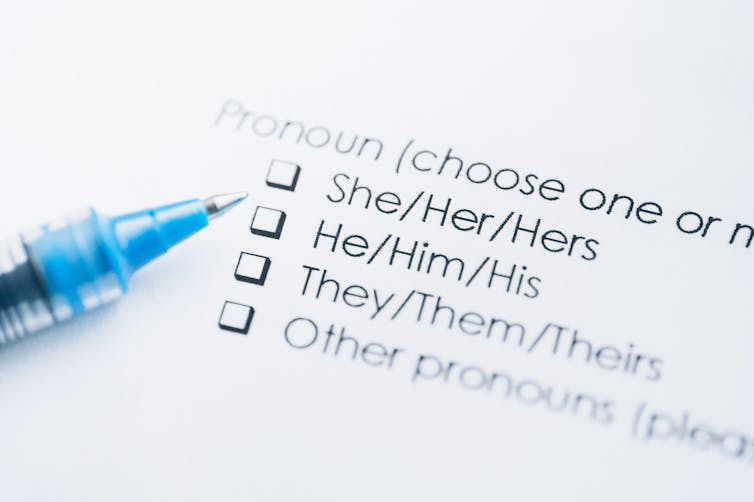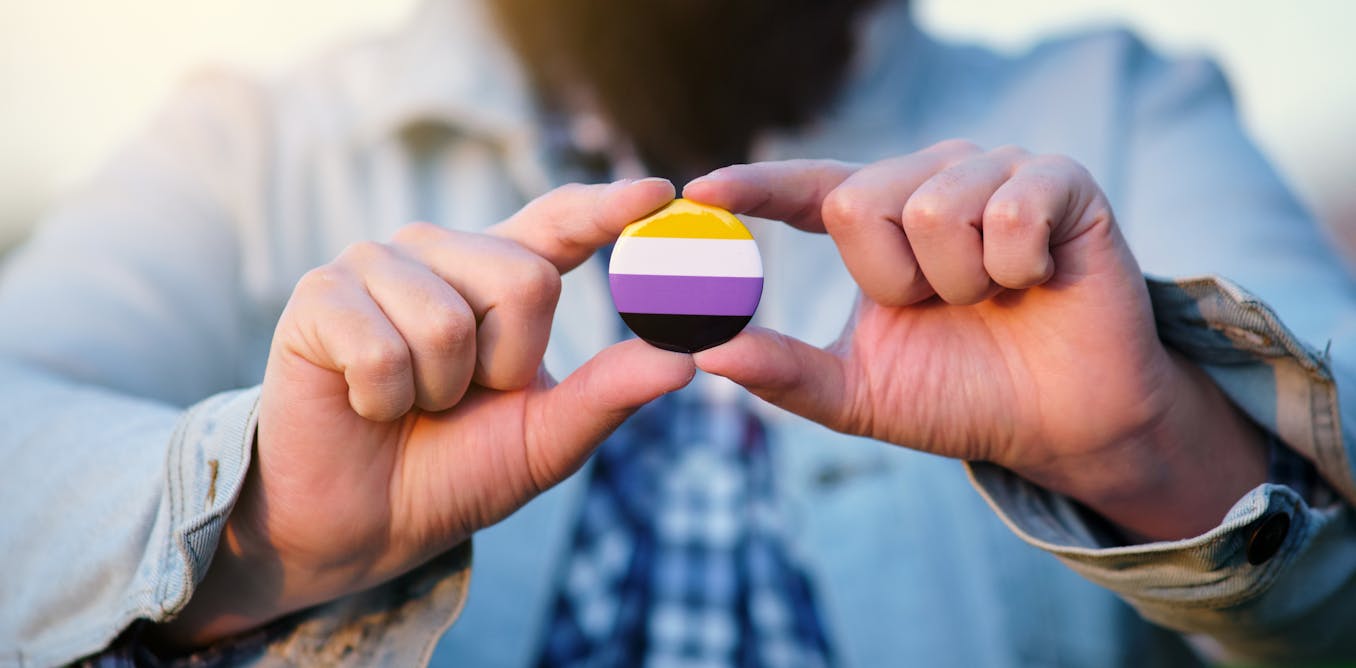Since his inauguration in January 2025, President Donald Trump has issued several executive orders that seek to limit federal recognition of transgender people. These orders have attempted to ban transgender athletes from women’s sports, require identity documents to label people as biologically male or female, bar federal funding for gender-affirming care for minors and bar transgender people from serving in the military.
The common element in each of these policies is a promise from Trump’s inaugural speech that his administration would recognize only two genders: male and female.
These executive orders make life difficult for transgender people, many of whom do identify as women or men, just not the sex they were assigned at birth. Apart from that, however, the emphasis on two and only two genders denies the existence of another group that is often misunderstood: nonbinary people.
Trans vs. nonbinary
I am a sociologist who studies gender. Over the past few years, co-researchers and I have interviewed 123 nonbinary people in three regions in America: the South, the Midwest and the West Coast. These interviewees spoke about how nonbinary people’s increased visibility in society in recent years helped them feel more welcome and liberated from gender stereotypes.
All of the respondents are nonbinary. They do not want to be seen as the opposite sex from what they were assigned at birth; they do not feel they were “born in the wrong body.”
Rather, they want to avoid being forced into the either/or labels that the categories “masculine” and “feminine” or “man” and “woman” entail. They opt out of those binary identifications altogether.
Luis Alvarez/DigitalVision via Getty Images
Decades of research, some of it our own, have shown that sex and gender are different from one another. Sex refers to primary and secondary sex characteristics, while gender is about the cultural meanings built upon sex categories.
Gender is a social system that justifies rules and expectations that differentiate between the rights and social roles of men and women. These systems vary across time and place. Today, there are societies such as those in Iceland, Barbados and Bosnia-Herzegovina where women lead the government, while in other societies women must be covered or secluded at home.
Sense of self
Most of the people we talked to were under age 30. Typically, they rejected the societal pressure to adopt the personality characteristics that are stereotypically associated with their biological sex, such as submissiveness for women and toughness for men.
Many of them also reject the ways people are expected to dress and use their bodies to show whether they are men or women. Some people who had been raised as boys wore nail polish and earrings, for example, while sporting a beard. Others wore long earrings and makeup – though those kinds of choices do not necessarily mean someone is trans or nonbinary. Many of the respondents who had been raised as girls, meanwhile, chose to wear masculine clothing. They wanted to mix and match traditional symbols of gender.
Many of the respondents had felt that binary gender identities never quite fit, and they described feeling overjoyed or relieved when they learned about the word “nonbinary”: an identity that offered a more accurate reflection of their sense of self.
“I was just kind of a flesh blob to myself, until I kind of found out that there was a term … nonbinary. And I heard the term and I was like, “Oh, that actually sounds correct for me. That actually feels right …”
Another person we interviewed remembered:
“Before I knew what to call myself … it was like a sense of emptiness. … I finally found that piece to put in that empty spot. And it feels more full now. Like, I feel complete now.”
He, she, they
The implications of that discovery were quite diverse, however. Although all the interviewees identified as nonbinary, what that meant for how they wanted to interact with their friends and families differed dramatically.
For about half of our respondents, using the pronouns “they/them” rather than he/him or she/her was very important, because using that pronoun made them feel respected. Indeed, when asked how they felt being referred to as they/them, one person told us:
“It felt like magic. It felt like everything just went into place and everything fit. And I was just like, ‘Oh, my God, this is … this is it.‘”

MarioGuti/iStock via Getty Images Plus
Other people we interviewed didn’t really care how others refer to them: he, she or they. Some of these people described having a flexible sense of their own gender. Some days they feel more feminine and use “she”; other days they feel more masculine, and “he” might work better.
“I don’t have to choose one,” one person told us about their pronouns. “I just need all of them in the arsenal.”
Still others said they don’t care about a “proper” pronoun because they do not think gender should matter at all. They don’t want to be a third category, a “they.” Instead, they hope for a world where their body parts do not determine how they’re perceived or treated, and so gender is not central to their identity. They would like to do without gender entirely.
Significance – for everyone
The people we interviewed want the right to live in peace without being forced into a gender category. The recent executive orders deny this freedom by declaring that gender “does not provide a meaningful basis for identification” – contradicting a decades-long consensus in the social sciences on the distinction between sex and gender.
Understanding that sex and gender are related but different matters not only for people who identify as nonbinary or transgender, but for everyone. Without that understanding, it is far too easy to presume socially constructed gender differences are essentially biological and to stigmatize people who do not follow strict gender norms. If you believe the myth that biology alone is the sole reason women and men differ, it would be easy to presume, for example, that women are naturally less ambitious or that men cannot be as nurturing.
If I have learned anything from our team’s research on nonbinary young people, it is that human beings are creative and try to carve out a place for themselves in the world. The evidence suggests that gender nonconformity and diversity is wide and deep in America. What is at stake, however, is how much freedom or oppression individuals will face as they express themselves.




